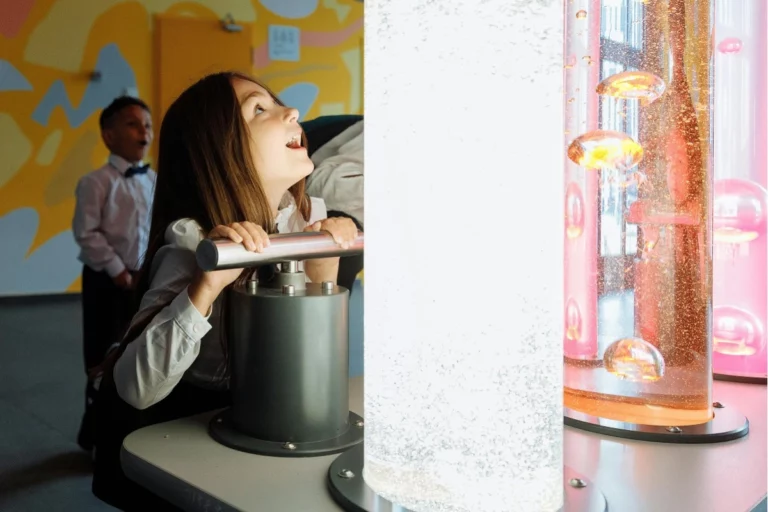Take the kids to interactive museums and discover the adventure that mixes learning and fun for the family! So, let’s learn tips and curiosities for your next visit to immersive museums!
First of all, interactive science museums are a way of learning in an accessible way. For this reason, kids can touch robots or observe planets in virtual reality exhibits.
In addition, they are spaces designed with activities for kids that encourage touch, movement, and curiosity.
Why Visit Interactive Museums with Kids?
Interactive museums have spaces to explore, create, and learn in a playful way. Unlike a traditional museum, where touching is not allowed, they can touch with their hands. For example, in an interactive science museum, they can experience activities that explore concepts like gravity.
Notably, an interactive art museum allows kids to participate in creating artworks. Just like encouraging drawing, painting, or assembling sculptures, a visit with a hands-on creativity lesson.
Moreover, the interactive color museum is a way to explore the science behind colors. Such as exploring colors dynamically, the effects of lighting, and creating colorful art in motion. In summary, they combine visual fun with practical learning.
Kids’ Activities in Interactive Art and Technology Museums
Some interactive art museums offer spaces only for kids to create artworks using recyclable materials. Similarly, they can participate in digital exhibits with virtual screens and projections. Then, in an interactive technology museum, they can see what it would be like to program small robots or play with educational games.
It is worth mentioning that these activities combine learning and fun. Moreover, interactive exhibits allow the whole family to explore science and technology together.
Planning a Fun Day at Immersive Museums
Before visiting immersive museums, look for information about which activities are available. Many interactive museums near me offer storytelling sessions or creation workshops. Just as other interactive museums near me may include sensory spaces for small kids and other activities for teenagers.
To complete, bring some snacks and water, as the attractions may last a few hours. Even so, a tip is to reserve time for breaks and enjoy the outdoor spaces if available.
In conclusion, these places are spaces that offer learning opportunities through hands-on activities. Besides that, they provide activities that mix elements of science, art, and technology.
Did you like our tips? Explore other articles on our blog to plan fun outings with the family!
- Is Travel a Hobby? Discover Its Relaxing and Enriching Side
- Best Place to See Northern Lights: Top Destinations Revealed
- 15 Best Scuba Diving Destinations in the World
- Places to Visit – Explore Places & Plan Your Next Vacation
- Greek Islands Best to Visit












